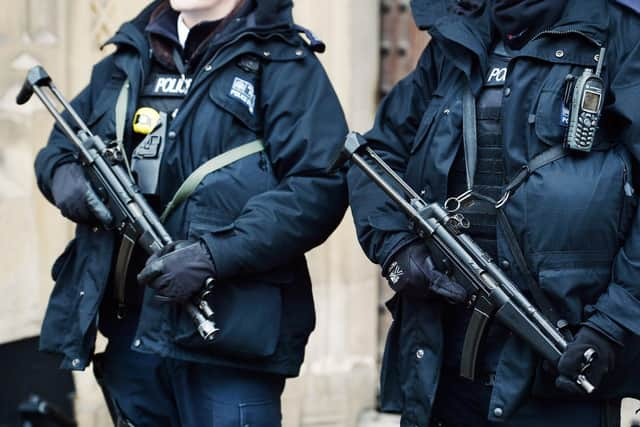The difference between police officers carrying firearms in the UK and other parts of the world is stark - Dr Alan Billings
However, it was only when David Hartley, one of the Assistant Chief Constables, passed me a note about armed police last week that I realised just how stark the contrast is.
Fewer than 5 per cent of British police officers are trained in the use of firearms and only 2 per cent of patrolling officers are armed. Or, putting that the other way round, 98 per cent of officers in this country patrol unarmed. When I speak to friends in the USA about this, they find it almost unbelievable.
Advertisement
Hide AdAdvertisement
Hide AdIt is a remarkable statistic and one that relies on two things. The first is that officers in this country police by consent. By and large, when the police are maintaining law and order in a town centre or an outlying estate or a country village, they can count on the public being supportive. Without that, in so many situations, they might struggle. Which is why they must always work hard to maintain that trust and confidence.


The second is that we are not people who feel the need to arm ourselves. Again, I contrast that with what my friends tell me about America. Although none of them have weapons in the house – at least they have never said so – they all have neighbours that do. Their neighbours argue that this is ‘for protection’. If that sounds familiar, it’s because this is what scared young people say in this country when challenged about carrying knives. This, I believe, is the principal reason for young people having knives. And, of course, the more young people carry blades, the more other young people become frightened and are tempted to do the same. It becomes a perfect circle that is very hard to break. In turn, this is another very good reason why we need to stop young people feeling they need to carry knives, because, as they get older, they may graduate to carrying firearms.
In the USA, it is hard to stop people wanting to have weapons in the house for similar reasons, and that is why, whenever someone takes a gun into a school or public place and fires at random, it is not seen as a reason for banning weapons but a reason for buying them – a gun for self-protection. The perfect circle where violence breeds violence. And it is the reason that there are 71,600 firearms dealers in the US. So far, we have been spared that. Over the past ten years, armed police in England and Wales have responded to an average of 17,323 operations per annum. Some of these have been planned operations, others spontaneous when a situation has developed. On average, officers discharged their weapons on 6.6 occasions per annum – 0.04 per cent. This has resulted in two fatalities per year – 0.01 per cent. Compare that with the American scene. In 2022, the police in America shot dead 1,060 people. In that same year, four states allowed their citizens to carry concealed weapons without a permit in public places.
We all acknowledge that every life lost is a tragedy – for the deceased, for their family and friends – and also has a huge impact on a community. This is no less true if the death is the result of police action. But what we don’t always understand is the impact this has on the officers themselves and their families if they have to use their weapons and if that results in a fatality.
A shortened version of the Police and Crime Commissioner for South Yorkshire’s latest blog post.
Comment Guidelines
National World encourages reader discussion on our stories. User feedback, insights and back-and-forth exchanges add a rich layer of context to reporting. Please review our Community Guidelines before commenting.